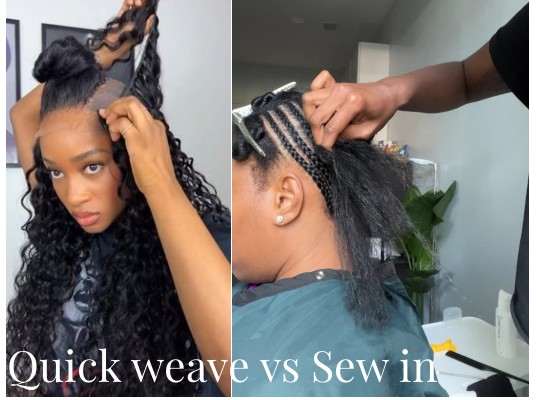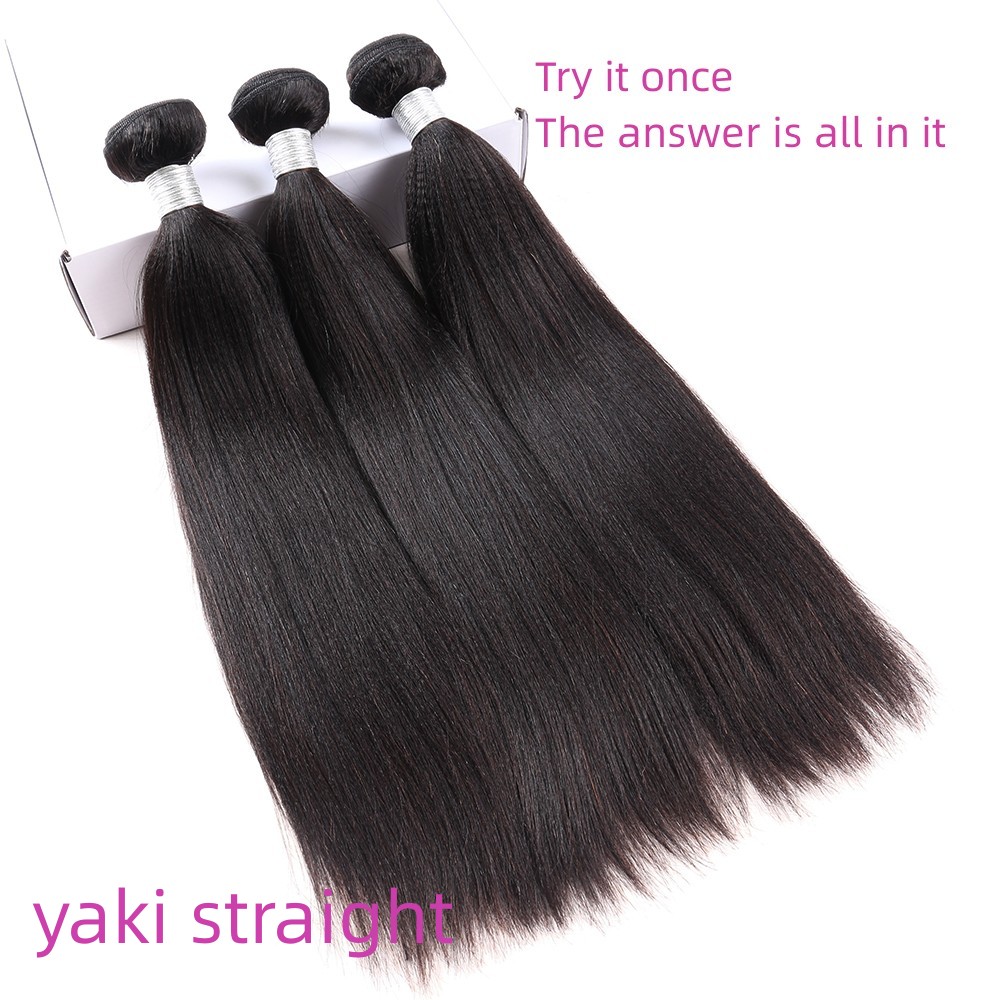When it comes to hair extensions, women often find themselves stuck between a rock and a hard place: quick weave or sew-in? Both methods have their unique perks and downsides, and your choice will depend on several factors like lifestyle, budget, and hair type. In this article, we will compare quick weave vs sew-in to help you make an informed decision.

Quick Weave VS Sew In
The most notable difference between quick weaves and sew-ins lies in how they are applied.
Quick weaves involve bonding extensions to a protective cap placed over your natural hair, using glue. This method skips the intricate cornrowing, making it quicker and generally more affordable. The protective cap helps shield your real hair from the adhesive but still requires care during removal to avoid damage.
In contrast, sew-ins are a more labor-intensive process where your natural hair is braided into cornrows before the extensions are sewn onto these braids. The needle and thread method ensures a more secure attachment, suitable for those looking for a durable, long-lasting solution. Given the complexity, sew-ins usually take longer to apply and may cost more, but they also offer a sturdy and less damaging option if maintained properly.
Pros and Cons of Quick Weaves
Pros:
Speed: As the name suggests, quick weaves are fast to install. You can achieve a new look in just a few hours.
Cost-Effective: Typically costing around $55-$60, quick weaves are more affordable than other hair extension methods.
Variety: Quick weaves allow you to experiment with different styles, lengths, and textures without a long-term commitment.
Cons:
Longevity: Quick weaves are not meant to last long. Most wearers find that they can only keep their quick weave for about two weeks before it needs to be removed.
Security: The adhesive used in quick weaves can sometimes cause the extensions to feel less secure. The glue can also lead to itching and discomfort.
Hair Health: The adhesive used can potentially damage your natural hair if not removed properly.
Pros and Cons of Sew-In Hair Extensions
Sew-in hair extensions are a more permanent solution compared to quick weaves. This method involves sewing the hair extensions onto braids made from your natural hair. While sew-ins offer numerous benefits, they also come with some challenges.
Pros:
Longevity: Sew-in extensions can last significantly longer—up to 8 weeks or more with proper maintenance.
Security: Sew-ins tend to feel more secure since they are tightly sewn onto your braids. This method offers a more natural and seamless blend with your hair.
Healthier for Natural Hair: Unlike quick weaves, sew-ins do not use glue, reducing the risk of damage to your natural hair.
Cons:
Time-Consuming: Installing sew-in extensions can take several hours, making it a longer process compared to quick weaves.
Cost: Sew-ins are generally more expensive, ranging from $90-$200 depending on the hair type and installation complexity.
Discomfort: The braiding process involved in sew-ins can sometimes cause tension and discomfort, especially for those not accustomed to it.
Quick weave vs sew in
Choosing between quick weaves and sew-in hair extensions ultimately boils down to your personal hair goals, lifestyle, and budget. Here are some guiding questions to help you make a more informed decision:
1. What is Your Desired Duration?
If you’re looking for a temporary hairstyle for a special event or to try a new look, quick weaves are the way to go. They are easy to install, cost-effective, and perfect for short-term wear.
Quick weaves generally last about two weeks. Stretching them beyond this period can lead to issues such as exposed tracks and discomfort, making timely removal essential.
If you prefer a more lasting solution, sew-in hair extensions are more suitable.
Sew-ins can last up to 8 weeks or more with proper care. Regular touch-ups and maintenance can further prolong their lifespan, making them a worthwhile investment for those seeking a long-term solution.
2. What is Your Budget?
Quick weaves are more affordable, making them an ideal choice for those on a tight budget or those experimenting with different styles without a hefty financial commitment.
Sew-in hair extensions require a higher initial investment. However, their longevity and natural appearance take them worth the cost for those willing to spend a bit more upfront.
3. How Much Time Can You Commit to Maintenance?
Quick weaves are less demanding in terms of daily upkeep but require timely removal within a couple of weeks.
Sew-ins necessitate a more rigorous maintenance routine, including regular washing, moisturizing, and touch-ups. However, they offer significant durability and a seamless blend with your natural hair.
4. What Kind of Lifestyle Do You Lead?
If you lead an active lifestyle and need a more secure and natural-feeling solution, sew-in hair extensions are preferable. They’re sturdy and can withstand various activities, including workouts and swimming.
On the other hand, if you’re okay with a temporary change and the convenience of a quicker, easier installation, quick weaves are a great choice.

Conclusion
Both quick weaves and sew-in hair extensions have their unique advantages and challenges. Your ideal choice depends on your specific needs and preferences. By understanding the differences in cost, maintenance, and longevity, you can confidently make a decision that aligns with your hair goals and budget, ensuring you get the most out of your hair extension experience.
Helpful link: